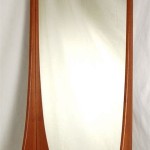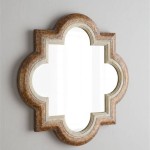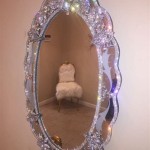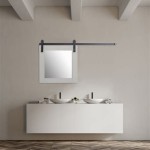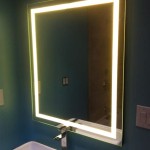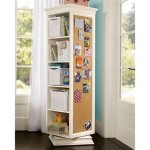Elevating Living Room Style: The Impact of Wall Mirrors
Wall mirrors are more than just reflective surfaces; they are transformative design elements capable of dramatically altering the ambiance and perceived dimensions of a living room. The strategic placement and selection of wall mirrors can enhance natural light, create illusions of spaciousness, and serve as striking focal points, ultimately elevating the overall style and aesthetic appeal of the room.
Understanding the potential of wall mirrors requires careful consideration of various factors, including the size of the room, the existing décor, the desired effect, and the architectural features that can be accentuated or subtly altered through reflection. This article will explore the diverse ways in which wall mirrors can be employed to enhance living room style, providing practical insights and considerations for selecting and positioning these versatile design tools.
Maximizing Light and Space with Strategic Mirror Placement
One of the most significant benefits of incorporating wall mirrors into a living room is their ability to amplify natural and artificial light. Mirrors strategically positioned opposite windows can reflect sunlight deep into the room, effectively doubling the illumination and creating a brighter, more inviting atmosphere. This is particularly advantageous in rooms with limited natural light or those facing less sunny directions.
The size and shape of the mirror play a crucial role in maximizing light reflection. Larger mirrors, naturally, reflect more light than smaller ones. However, even smaller mirrors can be effective when strategically placed to catch and redirect light beams. Consider placing a mirror near a lamp or sconce to further enhance the illumination in the room.
Beyond light enhancement, mirrors can create the illusion of increased space. In smaller living rooms, a large, centrally positioned mirror can visually expand the room's dimensions, making it feel less cramped and more open. This is achieved by reflecting the existing space and creating a sense of depth. To further enhance this effect, consider positioning the mirror on a wall that is opposite a window or a frequently used doorway, as this will create a more compelling illusion of continuation and flow.
The placement of mirrors for spatial enhancement requires careful consideration of what is being reflected. Avoid reflecting cluttered areas or visually unappealing elements, as this will only amplify those aspects. Instead, focus on reflecting visually pleasing elements, such as greenery, artwork, or architectural details. This will create a harmonious and aesthetically pleasing reflection that enhances the overall ambiance of the room.
Using Mirrors as Focal Points and Decorative Elements
Beyond their practical applications, wall mirrors can serve as stunning focal points and decorative elements in a living room. The frame of the mirror, its shape, and its overall design can contribute significantly to the room's aesthetic, complementing and enhancing the existing décor.
Oversized mirrors with ornate frames can create a dramatic statement, instantly drawing the eye and establishing a sense of grandeur. These types of mirrors are particularly effective in rooms with high ceilings or a more traditional design aesthetic. Conversely, minimalist mirrors with sleek, frameless designs can create a more contemporary and understated look, blending seamlessly with modern décor.
Consider the architectural style of the room when selecting a mirror. In a Victorian-era living room, a mirror with an elaborate, gilded frame would be an appropriate choice, while in a modern loft, a large, rectangular mirror with a simple metal frame would be more fitting. The mirror should complement the existing architectural features and enhance the overall design aesthetic of the room.
Mirrors can also be grouped together to create a gallery wall effect. This is an excellent way to add visual interest and personality to a living room. Experiment with different shapes, sizes, and frame styles to create a unique and eclectic display. Consider incorporating other decorative elements, such as artwork or photographs, into the gallery wall to further personalize the space.
When using mirrors as decorative elements, pay attention to the scale and proportion of the mirror in relation to the surrounding furniture and décor. A mirror that is too small may get lost in the space, while a mirror that is too large may overwhelm the room. A well-proportioned mirror will complement the existing elements and create a sense of balance and harmony.
Selecting the Right Mirror for Your Living Room Style
Choosing the right wall mirror for a living room involves considering several factors, including the overall style of the room, the available space, the desired effect, and the budget. There are a vast array of mirror styles available, ranging from classic and traditional to modern and contemporary, ensuring that there is a mirror to suit every taste and décor.
For traditional living rooms, consider mirrors with ornate frames, such as those made of wood, metal, or resin. These frames often feature intricate carvings, gilded finishes, and other embellishments that add a touch of elegance and sophistication. Oval or rectangular mirrors with curved edges are also popular choices for traditional spaces.
In contemporary living rooms, minimalist mirrors with clean lines and simple frames are often preferred. Frameless mirrors or those with thin metal frames are excellent choices for creating a sleek and modern look. Geometric shapes, such as squares, rectangles, and circles, are also popular options for contemporary spaces.
For eclectic or bohemian living rooms, consider mirrors with unique and unconventional designs. Vintage mirrors, salvaged mirrors, or those with unconventional shapes and frames can add a touch of personality and character to the space. Experiment with different textures and materials to create a truly unique and eye-catching display.
The size of the mirror should also be carefully considered. In smaller living rooms, a large, centrally positioned mirror can create the illusion of increased space, while in larger living rooms, multiple smaller mirrors or a gallery wall of mirrors can be used to add visual interest and depth. Always measure the available space before purchasing a mirror to ensure that it is the right size and proportion for the room.
The placement of the mirror is also crucial. Consider the existing light sources in the room and position the mirror to maximize light reflection. Avoid placing the mirror in a location where it will reflect unsightly elements or create glare. Instead, focus on reflecting visually pleasing elements, such as artwork, greenery, or architectural details.
Finally, consider the budget when selecting a wall mirror. Mirrors can range in price from relatively inexpensive to quite expensive, depending on the size, style, and materials used. Set a budget before you start shopping and stick to it. There are many beautiful and affordable mirrors available, so it is not necessary to break the bank to find the perfect mirror for your living room.
Ultimately, selecting the right wall mirror for a living room is a matter of personal taste and preference. Consider the factors outlined above and choose a mirror that complements the existing décor, enhances the ambiance of the room, and reflects your individual style. A well-chosen mirror can transform a living room from ordinary to extraordinary, adding light, space, and a touch of elegance.
Beyond the considerations mentioned above, remember to think about the practicality of the mirror. Will it be used for functional purposes, such as checking one's appearance, or will it primarily serve as a decorative element? If the mirror will be used for functional purposes, ensure that it is placed at an appropriate height and angle. If the mirror will primarily serve as a decorative element, focus on its aesthetic appeal and its ability to enhance the overall ambiance of the room.
The type of glass used in the mirror is also important to consider. High-quality glass will provide a clearer and more accurate reflection than lower-quality glass. Look for mirrors with low-iron glass, which is known for its clarity and lack of distortion. Also, consider the thickness of the glass, as thicker glass is generally more durable and less likely to break.
The mounting hardware for the mirror should also be carefully considered. Ensure that the hardware is appropriate for the weight and size of the mirror and that it is securely installed. If you are unsure about how to install the mirror properly, it is best to hire a professional to do it for you. Improper installation can result in the mirror falling and causing damage or injury.
By carefully considering all of these factors, one can select a wall mirror that will not only enhance the style of a living room but also provide years of enjoyment and functionality. The right mirror can truly transform a space, adding light, space, and a touch of elegance.

Luvodi Silver Beveled Decorative Wall Mirror For Living Room Bedroom Hallway Decor 39x28in Rectangle

Designer Mirror Ideas For Living Rooms Reflecting Elegance

42 In W X H Oval Wood Frame Brown Wall Mirror Hanging Gear Shape Decorative For Bathroom Living Room Hl W1445p171415 The Home Depot

Contemporary Wall Mirror For Living Room Decor

Wallbeyond 27 In W X 67 H Rattan Rectangle Natural Color Wood Framed Farmhouse Style Wall Mirror Interior Design Home Decor R314137a

Living Room Mirrors Set Of 3 For Wall Mirror Decor Modern Art Black Glass Prints

10 Magical Wall Mirrors To Boost Any Living Room Interior Design

Contemporary Wall Mirror For Living Room Decor 90l0j401

Modern 4 Piece 600mm Large White Gold Abstract Geometry Wall Mirror Decor Living Room Homary

Large Gold Mirror Vanity Wall For Living Room Bathroom Entryway Decorative Floor Home Décor Elegant Art
